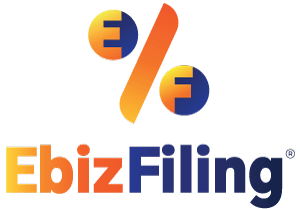
-
April 13, 2022
What is Section 115BAC? And CBDT Clarification on Section 115BAC of Income Tax Act, 1961
Table of Content
Introduction
The Finance Act of 2020 added a new section 115BAC to the Income Tax Act, which allows an individual to select between the real tax rates and the new concessional tax rates without taking into account prescribed exclusions or deductions. However, since the implementation of Section 115BAC of the Income Tax Act, there has been some confusion as to whether an employer can evaluate the new tax regime when withholding taxes from a worker’s salary. To address these concerns, the Central Board of Direct Taxes (CBDT) released Circular No.C1 of 2020 clarifying that an employer should compute the Tax Deduction at Source (TDS) using the provisions of Section 115BAC, if applicable, depending on intimation received from the individual employee.
What is Section 115BAC?
The newly incorporated Section 115BAC of the Income Tax Act, 1961 deals with the new income tax structure. Individuals and Hindu Undivided Families (HUFs) are the only ones who are affected by this section and alternate tax regime, which was introduced in the Union Budget 2020. The income tax bracket rates have been drastically cut under this new regime, which is an important aspect. However, the higher rates come at the expense of many important income tax exemptions and deductions that were previously accessible under the old (existing) tax system.
Information on New Tax Regime
Individuals and HUFs will benefit from the Finance Act of 2020’s new optional tax system, which contains updated tax slabs and rates. A person or HUF may choose to compute tax on total income without taking into account prescribed exemptions or deductions while filing his income-tax return using the new slab rates instead of the current tax regime if certain requirements are met.
Eligibility Criteria under Income Tax Section 115BAC
-
There is no business income included in the claimed income.
-
It is determined without any exemptions or deductions for any allowances or benefits.
-
Except for those u/s 80CCD/ 80JJAA, Section 24b, Clause (5)/(13A)/(14)/(17)/(32) of Section 10/10AA/16, Section 32(1)/ 32AD/ 33AB/ 33ABA, Section 35/ 35AD/ 35CCC, of Section 57, it is computed without any exemptions or deductions granted under the following Chapter VI-A.
-
It is determined without taking into account any losses from previous assessment years (AYs) due to the aforementioned deductions or losses from housing property.
-
It is determined without taking into account any depreciation under Section 32.
CBDT Clarifications on Section 115BAC of Income Tax Act Key Points
The following are the main points of the CBDT clarifications:
-
If the taxpayer is an employee who earns money from sources outside than the organization. He should notify the detector each prior year if he expects to seek a reduced rate under Section 115 BAC.
-
If the employee fails to notify the employer, the employer is required to make TDS (Tax Deducted at Source) without regard to the rules of Section 115BAC of the Income Tax Act, 1961.
Points to be Considered about the new tax regime under Section 115BAC
-
The new income tax slab rates, which are only applicable to individuals and Hindu Undivided Families (HUFs), are discussed in Section 115BAC of the Income Tax Act.
-
Although the new regime has substantially lower slab rates, it also eliminates many tax deductions and exemptions that were available under the previous regime.
-
The new income tax system is optional; you can continue to use the old System.
-
If an individual or a HUF fails to meet any of the conditions listed in Section 115BAC, the option to pay income tax under the new regime may become invalid for the corresponding financial year.
-
If you have any business income in the corresponding fiscal year, you cannot choose the new regime.
-
The new income tax regime has the same surcharge and cess rates as the old scheme.
Alternate Tax Regime under Section 115BAC / Tax rates under Old Tax Regime
|
New Tax Slab Rate |
Old (Existing) Tax Slab Rate |
|
Income in between INR 2.5 – 5 Lakh – 5% |
Income in between INR 2.5 – 5 Lakh – 5% |
|
In between INR 5 – 7.5 Lakh – 10% |
In between INR 5 – 10 Lakh – 20% |
|
Income from INR 7.5 – 10 Lakh – 15% |
Income more than 10 Lakh – 30% |
|
In between 10 – 12.5 Lakh – 20% |
– |
|
Income from 12.5 – 15 Lakh – 25% |
– |
|
Income more than 15 Lakh – 30% |
– |
In this regard, the CBDT has stated that a taxpayer with income must inform his employer of his decision to switch to a new tax regime with lower rates without taking into account authorised exemptions or deductions. Once an employee has made such a notification, it cannot be changed within the fiscal year in question. As a result, the employer would be required to determine total income and deduct TDS in accordance with the new tax scheme.
-
If the employee fails to notify the employer, the employer will be compelled to compute total income and deduct TDS in accordance with the former tax scheme.
-
The notification to the employer would not be considered exercising the option under the Act’s section 115BAC (5). As a result, the option of submitting the return during that time period may differ from the employee’s notification to his employer for that financial year.
Section 115BAC of Income Tax for the Taxpayer having Business Income
Furthermore, if a taxpayer has a business income, the option will be applicable for all subsequent financial years if it is exercised, and such taxpayers will be forced to tell their employer. Except in rare circumstances, an intimation cannot be changed for the following fiscal year once it has been issued.
Conclusion
The explanations released by the CBDT remove any misunderstanding regarding the employer’s responsibility in applying the new tax regime while computing TDS on salary.
Employees will be less inconvenienced and will be able to obtain refunds of excess taxes withheld as a result of the communication (if any). As a result, if employees notify their employer that they want to switch to a different tax rate, the employer must deduct TDS at the new rate.
Source: Clarification in respect of option under section IISBAC of the Income-tax Act, 1961)
ITR filing
Filing of Income Tax return is necessary if you have earned any income. File your ITR with EbizFiling
About Ebizfiling -





Reviews
Anish Mehta
04 Jan 2018"I would whole heartedly recommend ebizfiling for their professional and diligent work. We are delighted to acknowledge the excellent services provided by ebizfiling for the legal structuring and compliance. I would like to thank ebizfiling, for their approachability, fair pricing and timely responses."
Devangi Patnayak
11 Mar 2018I am very happy with the way they serve their clients. They are focused on providing the best help that they can and are result oriented.
Kavya Talada
29 Mar 2022Private company incorporation was done by ebizfiling I really thank the entire team for giving best service and with affordable price.. I have inquired many firms but ebizfiling is the best service
March 8, 2024 By Siddhi Jain
Section 194B of Income Tax Act, 1961: Prize, Betting, Lottery Winning Tax Introduction In the present day, there is a wide range of game shows, including the popular Kaun Banega Crorepati (KBC) and Fear Factor, as well as reality shows […]
February 29, 2024 By Siddhi Jain
Compliance Calendar For The Month of March 2024 Welcome to the Compliance Calendar for the month of March 2024. March being the last month of the Financial Year 2023-24, it becomes crucial for businesses and individuals alike must keep track […]
February 23, 2024 By Siddhi Jain
FAQs on Section 43B: Disallowance of the Amount Payable to MSEs Introduction The Income Tax Act allows the deduction of expenses depending on the accounting system followed by the taxpayer. If the taxpayer follows the cash system of accounting, deductions […]